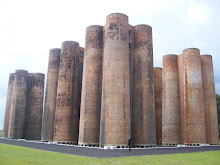It is a much quoted fact that by 2030, more than 3 quarters of the planet’s population will live in cities. While this creates a kind of hysteria in the upper echelons of planning and development departments worldwide, there are other glaring social and cultural factors to be considered in this new move towards an urban existence. It goes beyond architecture and the single dwelling, and it includes the networks and flows and accidents that occur.
DIY Urbanism is the shared experience of designing and participating in the creation of our urban environment. It uses a bottom-up and participatory approach. It includes the tactics of small-scale intervention, experimental and micro-architectures, the temporary, the nomadic and the add-on. It’s a radical urbanism, one that challenges the current dominance of top-down urban planning and capitalist development.
It includes activist strategies and creative resistance to challenge the forces of control that are at work in the city. A spontaneous city should be encouraged, offering up opportunities to experience and experiment in the urban and public sphere. By being playful in the city and street, the functions that are dominant in the program are challenged.
It can be a temporary or new use for a transitional space. Like site specific and research based public art that examines situations occurring in a neighborhood or location, where public interaction is vital. The Zwischennutzing of gaps , terrain vague, wastelands, residual spaces and forgotten or unoccupied territories offer up a myriad of opportunities for creative use or misuse. It’s a chance to hack the city, to manipulate the plan.
We cannot deny the need for more housing in this burgeoning city, but what are the alternative forms we can experiment with? Can the community play a role in housing design and communal living? What kinds of democratic processes are there to participate in for the future city? Planning processes need to open up and made transparent. The community must be involved in building its own city to symbolize the diversity it encapsulates.
In keeping with the worldwide trend in sustainable design, it is obviously clear that any future direction needs to incorporate ecological understanding. But other issues arise. Is it more sustainable to develop new green technologies, or simply reuse and recycle existing buildings and ruins? In an act reeking of Disney’s Imagineering, will the industrial heritage of place like Cockatoo Island be forgotten under man made and picturesque rolling hills?
The city of Sydney is at a turning point. The next decade will see many new large developments built, and the future urban landscape is one in flux.
Now is the time for speculation, inspiration and dreaming.
Wednesday, February 17, 2010
Subscribe to:
Post Comments (Atom)

No comments:
Post a Comment